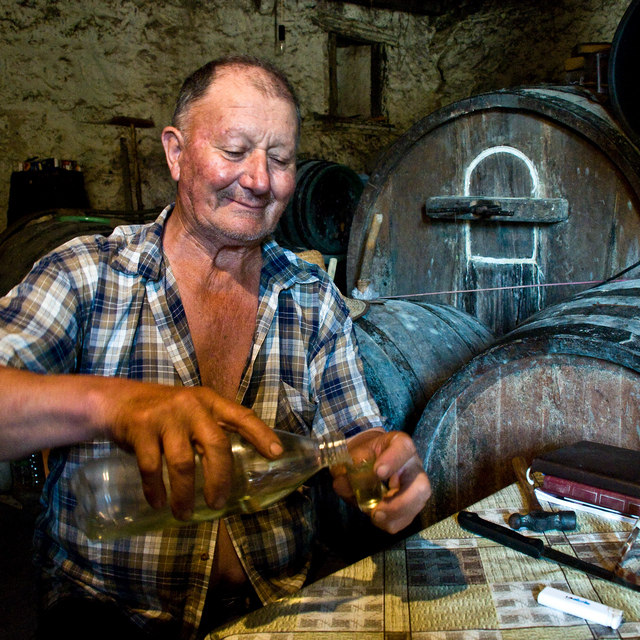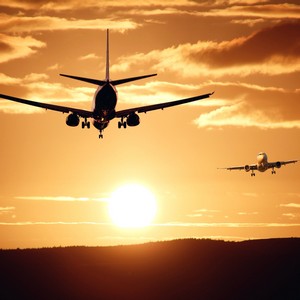
Day 1 : Belgrade
Arrive into Belgrade airport. Pick up at airport by a Travel The Unknown representative, transfer to a comfortable hotel in Belgrade city centre. Overnight in Belgrade.
Overnight in Moskva, Belgrade
Meal plan: n/a
Starting in Belgrade, Serbia’s buzzing capital, teeming with cafés,
bars and restaurants, wind your way through this often
misunderstood country. Learn about General Tito’s legacy and
explore Serbia’s more controversial recent past. Visit the ghoulish
Skull Tower of Nis, and ponder the influence of the Ottomans on
today’s Serbia. Take a boat out on the Danube, overnight in a
monastery, samples wines with locals and wander the eerie
landscapes of Devil’s Town.
Travel writer Adrian Mourby travelled with us on this trip. Read his article from the Independent on Sunday here
Belgrade - Studenica monastery - The Monastery of Sopocani - Niš - Devil’s Town - Mediana - Kladovo - Rajacka Pimnice - Srebrno Jezero - Novi Sad - Kovacica - Sremski Karlovci - Fortress of Petrovaradin

Arrive into Belgrade airport. Pick up at airport by a Travel The Unknown representative, transfer to a comfortable hotel in Belgrade city centre. Overnight in Belgrade.
Overnight in Moskva, Belgrade
Meal plan: n/a
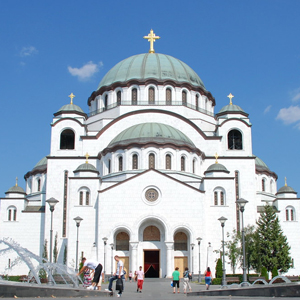
After breakfast you will take a short walking tour of Belgrade including Kalemegdan fortress. Then drive to the stunning Topola Royal Mausoleum, before continuing to Borac to find its famous Hidden Church. Start your journey south, arrive at the medieval Studenica monastery for dinner. Overnight in Studenica monastery.
Overnight in Monastery Guesthouse, Studenica monastery
Meal plan: Breakfast & dinner
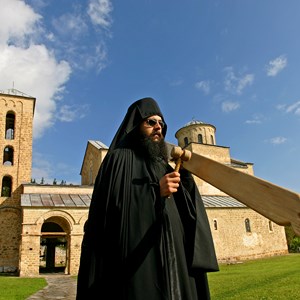
After breakfast, a short tour of Studenica monastery, then head on to the ancient Sopoćani monastery, followed by the Muslim-majority town of Novi Pazar. Take a wander through the old town, visit the bizarre Hotel Vrbak for a quick drink. Lunch in a local restaurant. Visit St. Peters 9th century church. Stop off in the mountainous region of Kopaonik for a short walk or coffee break. Drive to the spa village of Prolom Banja for dinner and overnight in a family home.
Overnight in Hotel Radan, Prolom Banja
Meal plan: Breakfast & dinner
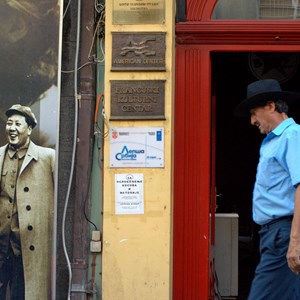
After breakfast we drive to Devil's Town for a visit. We continue to Nis to visit Mediana, Nis fortress and the famous Skull Tower. Overnight in Nis.
Overnight in New City Hotel , Niš
Meal plan: Breakfast
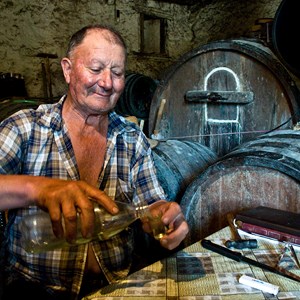
After an early breakfast, leave for the scenic village of Rajacka Pimnice. One of the many highlights of this trip is to join the locals in their rustic wine cellars. Enjoy delicious Serbian cuisine and fine Serbian wines. Visit the unique graveyard nearby. Afterwards, drive west along the Danube to Kladovo. Overnight in Kladovo.
Overnight in Aquastar Danube, Kladovo
Meal plan: Breakfast & lunch
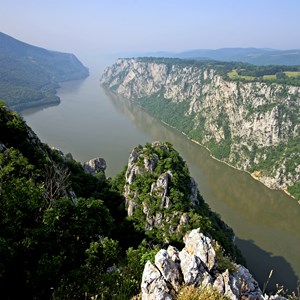
Breakfast followed by a one hour boat trip on the Danube (weather-dependent). Witness rugged cliffs, shimmering waters and views of Romania. Afterwards, drive on to the imposing Golubac Fortress with its nine towers, followed by Silver Lake (Srebrno Jezero). Have a relaxing lunch and take a dip in the mighty Danube. Afternoon to yourself. Overnight in Srebrno Jezero.
Overnight in Borovi, Srebrno Jezero
Meal plan: Breakfast

Leave Srebrno Jezero for Novi Sad, travelling along the Danube. Cross the Danube on the ‘Dereglija’ ferry on your way into Vojvodina. Visit the town of Kovacica en route. Overnight in Novi Sad.
Overnight in Hotel Centar, Novi Sad
Meal plan: Breakfast

Breakfast. Enjoy a tour of Novi Sad, which will include the Fortress of Petrovaradin. Continue to Sremski Karlovci and the monasteries at Fruska Gora. Later, drive through the flatland of Northern Serbia back to Belgrade. Overnight in Belgrade.
Overnight in Moskva, Belgrade
Meal plan: Breakfast

After breakfast you will be transferred to Belgrade airport for return flight.
Meal plan: Breakfast
All accommodation subject to availability. Final accommodation choices will be confirmed after booking.

The 4* Hotel Moskva was built in 1906 and is one of the most important architectural gems of the Serbian capital. All the rooms are equipped with stylish furniture, a mini bar, a cable TV, air conditioning and free wireless internet. Rub shoulders eccentric artists, enthralled poets and proud intellectuals at Hotel Moskva's cafe (the Nobel Prize winner Ivo Andrić even had his own table here), try the traditional “Moskva šnit” at the famous on-site pastry shop or dine at the on-site award-winning Restaurant “Tchaikovsky”. There is also an on-site Spa and Wellness Centre with a range of treatments.

The guest house at the Monastery Studenica is small and simple but the chance to stay within the grounds of this great site make staying here worthwhile. There are two sections - one building overlooks the monastery and the other the Studenica River. The rustic bedrooms and balconies show a glimpse of the stunning views across the Serbian landscape.

The Hotel Radan offers comfortable rooms with twin or double beds. All of their rooms include private bathrooms, cable television and wifi with rooms above the ground floor featuring a terrace to admire the views over Prolom Banja.

New City Hotel is situated in central Nis. The hotel has been designed and decorated in a contemporary style. The spacious en suite bedrooms are fitted with modern facilities that include air-conditioning and wifi. New City hotel restaurant serves a breakfast buffet, along with a lunchtime and evening à la carte menu which offers a combination of national and international dishes.

The 4* Aquastar Danube Hotel has modern rooms which all look over the Danube River. They are air-conditioned and equipped with direct phone line, satellite TV, internet connection, mini bar, safe, hair dryer and shower cabin.

Located close to Srebrno Jezero, this hotel provides clean, modern apartments and free Wi-Fi. There is a bar, a shared lounge, and a garden for guests to relax in.

Hotel Centar offers modern, comfortable and simple 4* accommodation in Novi Sad city center near the central pedestrian zone and most of the city sights and monuments. All rooms are equipped with modern appliances.
Impenetrable forests, abandoned monasteries and limestone caves
Serbia, North Macedonia, Albania, Kosovo, Montenegro & Bosnia
Ancient Greeks, Romans, Byzantines, Venetians & Ottomans
Discover Serbia, North Macedonia, Kosovo, Montenegro & Bosnia
Historic monasteries, striking valleys and Roman ruins
Uncover the hidden gems of Europe's best-kept secret
Follow the path of countless invaders
Discover the unique culinary heritage of Serbia
Visit the owl capital of the world
Discover Europe's coolest capital and the history & nature of Vojvodina
Adrian Mourby (Travel Writer) , Devil's Town & The Danube, SerbiaI have been extremely well looked after and am grateful to Dejan for showing me his wonderful country.

Raymond & Janet Sterling (USA) , Tailormade BalkansWe were looking for a land tour in the Balkans and contacted Travel The Unknown. The staff were very responsive in setting up a private tour schedule for us that proved to be perfect and reasonable in cost. We have just got back from our travels and can say that it was certainly a good choice The itinerary was varied and interesting and the accommodation well chosen. The quality and price of the food and wine in the region were an added bonus. Our drivers/guides were friendly, helpful and very knowledgeable. They went out of their way to accommodation our interests and preference.s Highly recommended!
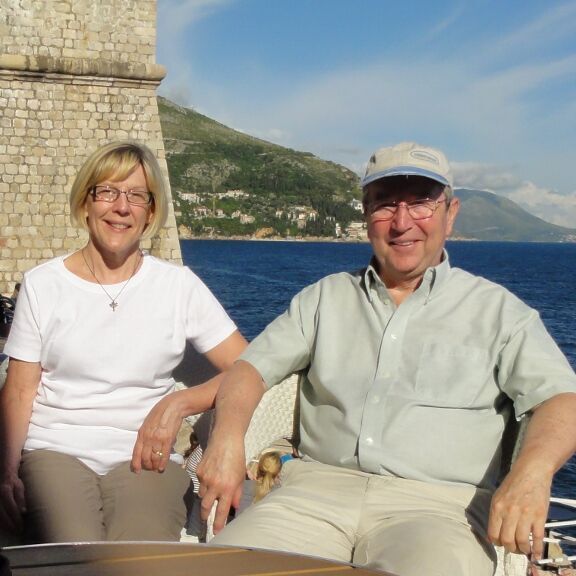
Cerys Matthews , Tailormade Guca Festivals TourThank you so very much for organising our trip. It went swimmingly, Dejan is super cool, the house was fab, the people lovely and strange, the rakjia insane. Memories of river swimming, spit roast pigs and lambs, urns of beans and cabbages, gallons of cheap beer and craze-inducing rakia with a massive dose of incomprehensible contemporary Serbian music , a modern take of Balkan brass orchestras, some tiny glimpses into Roma life, and rackety fair rides, along with beautifully grown organic vegetables and perfect skinned youth ...with not so many tourists. Plus a sand blast of the fascinating Balkan history with which the Belgrade fortress bulges, a clean and safe city … I`m a little overstuffed with roast pig but am thirsty as ever to find out more about the Roma and their music. All that history was what I found the most fascinating. Crazy stuff!
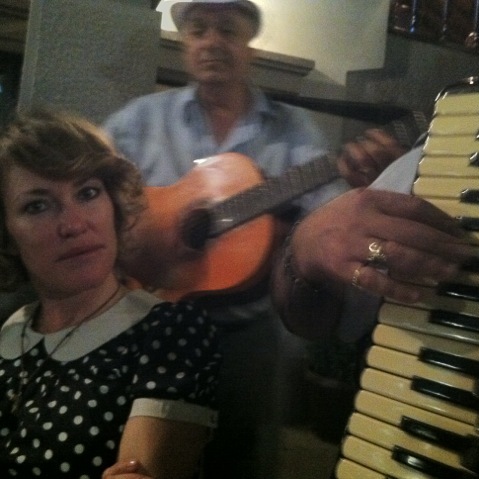
Laurence Mitchell (Author of Bradt Guide: Serbia) , Tailormade SerbiaI am delighted to see that Travel The Unknown have started to run tours to Serbia - it is time that someone did as the country has plenty to offer for all tastes. Looking at their itineraries for both North and South Serbia, it is clear that they manage to visit some of the more out the way places and lesser known sites that few know about. They offer a good degree of variety too, and their tours should give potential visitors a really good taste of this often overlooked destination.

Laurel & Paul Smallwood , Balkan Odyssey & Albanian Odyssey, BalkansThe Balkans is a fascinating part of the world to visit with such complex histories. Wonderful scenery, great food, terrific variety of accommodation and especially loved the vineyards and wine tastings! Albania was such a surprise package! So much more than we anticipated and so much to see and do in this small country. Stunning scenery and roads generally better than we expected. Go before the rest of the world discovers this gem.

Gerald & Ann Diamond , Tailormade SerbiaWas well thought out and the experience was absolutely GREAT!!!!!!

Declan Cloonan , Archaeology of SerbiaEnjoyed travelling with Travel the Unknown. They were most helpful and filled in as much as possible on our trip.
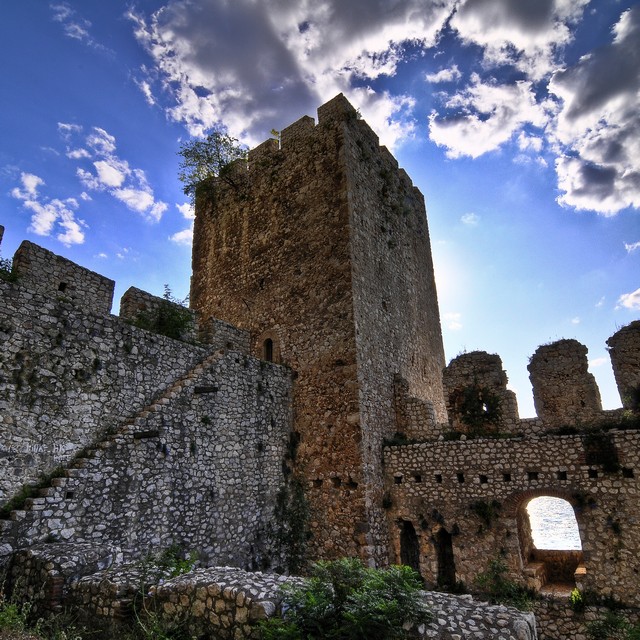
Nigel Denney , Archaeology of SerbiaI had the pleasure to be on the "Archaeology of Serbia" trip in May, which although only 8 days long was packed with fascinating insights into the complex history of the land. Not (yet) on the main tourist routes, there are many sites dating from stone-age, through Roman times to the many monasteries of the Middle Ages, some of which retain beautiful frescos, despite a turbulent history. The people here are friendly and the food served in hearty portions, plenty for meat lovers and vegetarian alike. I thoroughly recommend visiting Serbia before it becomes mainstream.

Milojko Dobrijevich , Festivals of Serbia, SerbiaSimply, a wonderful experience. There`s a special kind of relaxation that`s achieved when you know that you have none of the stress of organizing a trip, driving, navigating, travel, booking, etc. Thanks so much for an excellent experience.

Dennis Buisson , Northern Serbia - Owls & Raptors, SerbiaHave just returned from a wonderful holiday in Serbia with David Lindo, the Urban Birder, and local wildlife expert, Milan Ruzic. Truly a privilege to have been with leaders whose knowledge of birds - their identification and calls - was quite outstanding; their sense of humour would also take some beating. Serbia - a birdwatching destination with more bonuses than the average City banker.
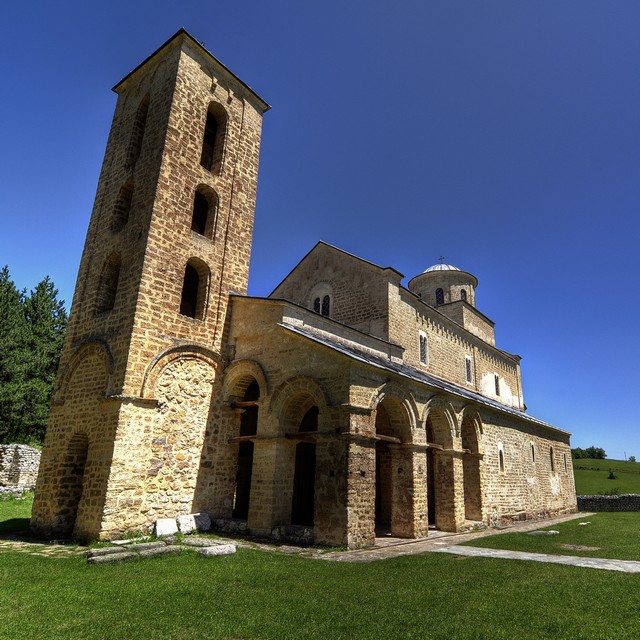
Jim Mackay , Tailormade BalkansA very well planned trip conducted by good drivers in well kept cars. Excellent commentary and we learnt a lot more than we expected about the countries and cites we visited. Definitely recommended.
